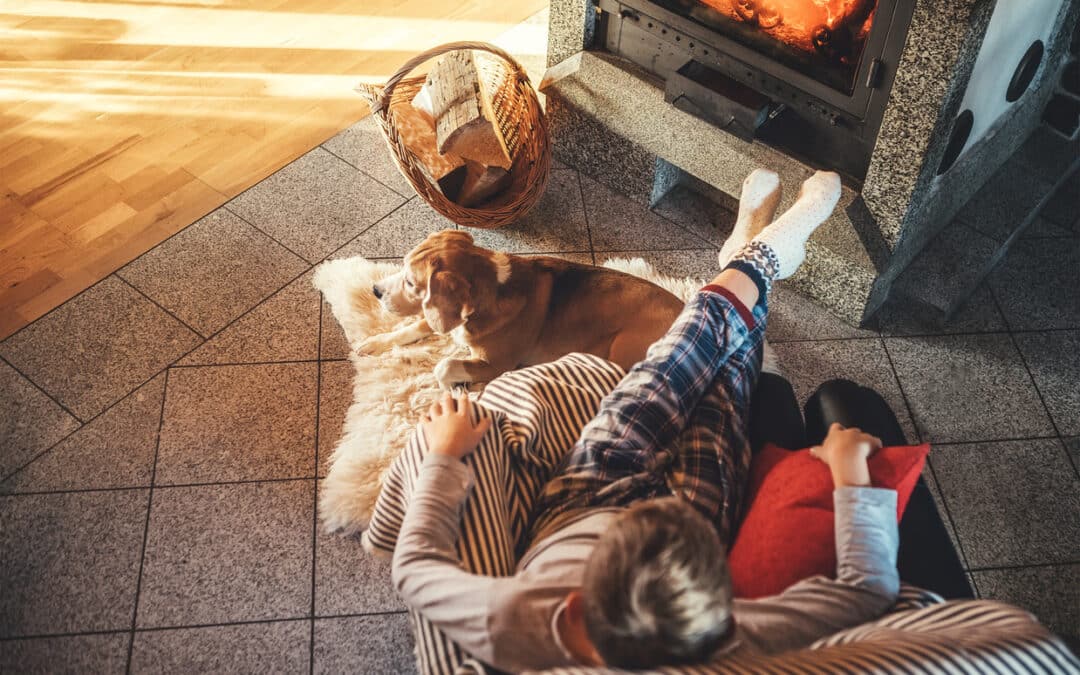Pets are lifelong companions that offer endless love, happiness, and emotional support. Every pet has a different personality and can act a bit silly sometimes. Unfortunately, your pet’s silly antics can quickly cause turmoil in your home if they start a fire.
Pet owners need to take necessary steps and precautions to prevent house fires that might be caused by their pets accidentally. Let’s explore some tips to create a safe and fire-free living space for you and your fur baby.
Can My Pets Cause A House Fire?
Your pet can cause a house fire by messing around or simply being themselves. They are naturally curious creatures, which can lead to unwanted, unexpected dangerous situations. Most pets have the urge to chew on wires, knock on things, or jump around, creating the perfect environment for a fire hazard.
Based on the severity of the situation, it is impossible to provide accurate data on how many domestic fires were caused by pets. However, the National Fire Protection Association (NFPA) claims that animals in the United States cause about 790 house fires annually [1]. This might look like a small figure but don’t forget that each time a fire occurred, a pet’s or its owner’s injury or fatality was linked to it.
Preventing Pet-Related Fires
To help reduce and ultimately eradicate the number of fires caused by pets, owners must understand their pet’s psychology. This way, they can plan and execute practical precautionary methods that will help safeguard their pets, families, and property.
Here are a few of the most effective ways to prevent pet-related fires:
Encourage Safe Play and Behavior
Fur babies are just like toddlers. You need to teach and train them so they know all the do’s and don’ts of being within a house. Start by training your pets and discourage any unwanted behavior. Basic commands like sit and stand to play a significant role in teaching your furry friends how to behave in an indoor setting. Plus, giving them the order to follow asserts your dominance and authority — even for cats!
One of the main reasons why many people cannot control their over-excited and hyper pets at home is because of very little playtime and activity. It is highly likely for animals to poke their nose at different things out of curiosity or boredom. So, whether you are busy with the most critical job or just lazy, please ensure your pets get enough attention, playtime, and exercise.
When training, elaborate your plan to everyone so that you and your family are on the same page about reinforcing a positive pet attitude around the house.
Secure Flammable Substances and Materials
Securing flammable substances around your home instead of confining your pets to a small space is more convenient and sensible. You can start by placing flammable liquids in air-tight and damage-resistant containers. Some common examples of fire-catching liquids found in most houses are gasoline, paint, thinner, grill fuel, and varnish. Besides their ability to catch fire, they also have a toxic smell that might cause constant irritation to pets and other family members.
Keep things like fabric and plastic away from heat sources within the house. Some familiar sources of heat around the home are heaters and stoves. Most house owners also prefer having well-regulated fire alarms, smoke detectors, and new fire extinguishers to prepare themselves for unwanted situations.
Naked wires, unchanged and old chords, and appliances should be checked thoroughly and repaired. Always hire a professional every year to inspect your residence, ensuring fire safety at all times.
Train Your Pets to Stay Away from Open Flames
While teaching them good behavior and safe play, staying vigilant and training them to avoid fire is also essential. The best practice is being alert and supervising them in a room with naked flames. You can discourage them with commands like NO or STOP to show disapproval as they go near the flame.
Training a pet doesn’t necessarily mean that you have to be strict, harsh, or abusive. Just being firm and assertive is enough to show your dominance. Remember to use plenty of treats while training your furry homies. They will do anything for a delicious munch.
Pet gates are a great way to create a barrier and give your pets the idea that they are not welcome at a particular spot. They will stop being curious about it after a while. If your home isn’t large enough, try to close the area with flames instead of restricting your beloved baby in a small space.
Training takes a while, but the rewards are fruitful for your pet’s and house’s safety.
Choose Flameless Candles
Flameless candles are a great alternative to your traditional wax-based options. They look and feel just like regular old aesthetically pleasing candles but are powered by an LED to create a similar effect. Flameless candles, although unauthentic, are incredibly safe and reduce the risk of fire hazards in houses with pets or children.
They are also more long-lasting than traditional candles, making them a cost-effective option for those on a budget. Flameless candles come in many colors for those with a knack for fun and flair.
In Case of Emergency: Evacuating Your Pets
Let’s say that regardless of all the measures, your pet still managed to set the house on fire. Now what? Well, first of all, you need to stop panicking and creating a hustle that not only bothers other people but also scares your pet. It can be challenging to evacuate your pets unharmed in case of a fire emergency, but if you are fully prepared in advance, you have higher chances of helping everyone get out of the house safely and in time.
Make it a priority to sit with your family to discuss their concerns regarding fire safety and assign everyone a role to help keep your pet safe if your house catches fire. Here are a few tips to keep in mind when creating a fire safety plan with your loved ones:
- Always keep your pet’s leashes and collars near the exit points of your home. This saves time and eliminates the hassle of finding it in an emergency.
- Keep a close eye on your pet’s favorite hiding spots regularly. In the case of a fire, your fur baby is likely going to panic and try to hide in cabinets, closets, or other locations. Check all such places before leaving your home.
- Practice an evacuation drill now and then. This will help them become familiar with the process and reduce their anxiety if any such situation occurs in real life.
Valley Restoration & Construction: Your Fire Restoration Experts
No one should have to experience the devastation of a house fire. However, as your local home restoration experts, we know these tragedies occur. If you find yourself dealing with the aftermath of fire damage to your home, Valley Restoration can help.
Our fire and smoke damage specialists will take care of every step of the cleanup and fire restoration process. Once we’re done, your home will be restored to pre-fire conditions, and you can get back to enjoying life.
Resources
[1] www.nfpa.org


